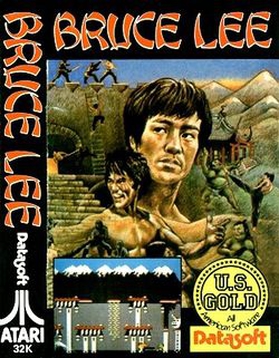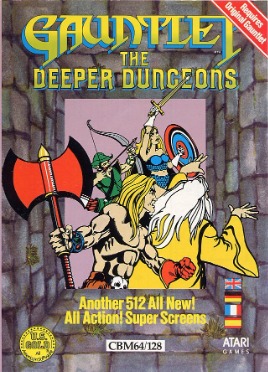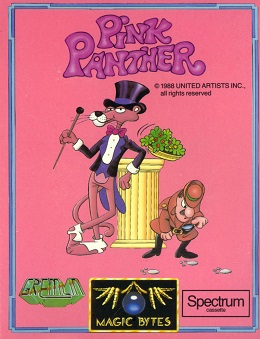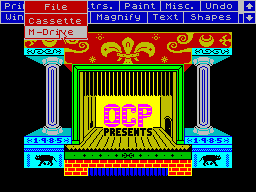The Multiface was a hardware peripheral released by Romantic Robot for several 1980s home computers. The primary function of the device was to dump the computer's memory to external storage. Pressing a red button on the Multiface activated it. As most games of the era did not have a save game feature, the Multiface allowed players to save their position by saving a loadable snapshot of the game. Home computer software of the early 1980s was typically loaded into RAM in one go, with copy protection measures concentrating the loading phase or just after it. The snapshot feature could be used after copy protection routines had been executed, to create a backup that was effectively unprotected against unauthorised distribution. Later models of the Multiface mitigated this by requiring the device to be present when re-loading the dumps into memory, making the dumps useless to people without a Multiface. Software producers also reacted to the threat by using routines that would prevent execution of the product if it detected that a Multiface was present and by loading the software in multiple parts, thus requiring the presence of the original, copy-protected media.

Road Runner is a racing video game based on the Wile E. Coyote and Road Runner shorts. It was released in arcades by Atari Games in 1985.

Krome Studios Melbourne, originally Beam Software, was an Australian video game development studio founded in 1980 by Alfred Milgrom and Naomi Besen and based in Melbourne, Australia. Initially formed to produce books and software to be published by Melbourne House, a company they had established in London in 1977, the studio operated independently from 1987 until 1999, when it was acquired by Infogrames, who changed the name to Infogrames Melbourne House Pty Ltd.. In 2006 the studio was sold to Krome Studios.
Odin Computer Graphics were a Liverpool-based computer games developer who came to prominence in the mid-1980s with a variety of titles for the ZX Spectrum, Commodore 64 and Amstrad CPC home computers.

Lenslok is a copy protection mechanism found in some computer games and other software on the 8-bit Atari computers, Commodore 64, ZX Spectrum, Sinclair QL, MSX and Amstrad CPC. It was created by John Frost, an inventor and electronics consultant, and marketed by ASAP Developments, a subsidiary of J Rothschild Holdings. The first game to use it was Elite for the ZX Spectrum.

Starglider is a 3D video game published in 1986 by Rainbird. It was developed by Jez San under his company name Argonaut Software. The game is a fast-moving, first-person combat flight simulator, rendered with colourful wireframe vector graphics inspired by San's love of the 1983 Atari coin-op Star Wars.

Graphic Adventure Creator is a game creation system/programming language for adventure games published by Incentive Software, originally written on the Amstrad CPC by Sean Ellis, and then ported to other platforms by, amongst others, Brendan Kelly (Spectrum), Dave Kirby and "The Kid" (C64). The pictures in the demo adventure, Ransom, were made by Pete James and the box cover art by Pete Carter.
David Lowe also known as "Uncle Art" is a British composer known for his work on computer games from 1985 to 1998.

Dandy is a dungeon crawl maze game for the Atari 8-bit family published by the Atari Program Exchange in 1983. It is one of the first video games with four-player, simultaneous cooperative play. Players equipped with bows and unlimited arrows fight through a maze containing monsters, monster spawners, keys, locked doors, food, and bombs in search of the exit leading to the next level. If a player dies, they can be revived by finding and shooting a heart. The game includes an editor for making new dungeons.
Alligata Software Ltd. was a computer games developer and publisher based in Sheffield in the UK in the 1980s.

Bruce Lee is a platform game written by Ron J. Fortier for the Atari 8-bit family and published in 1984 by Datasoft. The graphics are by Kelly Day and music by John A. Fitzpatrick. The player takes the role of Bruce Lee, while a second player controls either Yamo or alternates with player one for control of Bruce Lee.

Zub is a 1986 platform video game designed by Ste and John Pickford, developed by Binary Design, and published by Mastertronic for the Amstrad CPC, Commodore 64 and ZX Spectrum. The game has the player control Zub, who has to travel to different planets to retrieve the Green Eyeball of Zub. A parody of the game Light Force, called Lightfarce, was added in as an easter egg. The music on all computers was composed by David Whittaker.

Gauntlet: The Deeper Dungeons is an expansion pack for Gauntlet.

Superman: The Game is a 1985 video game designed by Fernando Herrera and published in the U.S. by First Star Software for the Commodore 64. For European release, Superman was ported the Acorn Electron, Amstrad CPC, Atari 8-bit family, BBC Micro, and ZX Spectrum.
Addictive Games was a UK video game publisher in the 1980s and early 1990s. It is best known for the Football Manager series of games created by company founder Kevin Toms. The company was originally based in Milton Keynes, England, and later relocated to Bournemouth, in southern England.
Tiertex Design Studios Limited was a British software development company and former video game developer based in Macclesfield, England; it was founded in 1986, focusing on porting games to home computers and handheld platforms.
The English Software Company, later shortened to English Software, was a Manchester, UK-based video game developer and publisher that operated from 1982 until 1987. Starting with its first release, the horizontally scrolling shooter Airstrike, English Software focused on the Atari 8-bit family of home computers, then later expanded onto other platforms. The company used the slogan "The power of excitement".
Kevin Bulmer, also known as Kev Bulmer, was an English artist, game designer and president of the graphic design and video game company Synthetic Dimensions, which was co-founded by him in 1985. Earlier in his career, he was a contributor to White Dwarf magazine. In 2009, Bulmer was given an honorary degree by the University of Wolverhampton for being a "pioneer of 3D image technology and computer games development", in particular for developing "a world-leading two-dimensional (2D) to 3D image conversion system which has been used worldwide by companies such as Nike, Reebok, Peugeot, Disney, EMI and Newline Cinema". Bulmer announced his plans to re-enter the video game industry in 2008, but died in 2011 of prostate cancer.

Pink Panther is a 1988 video game based on the character of the same name. It was developed by German company Magic Bytes and published by Gremlin Graphics. It was released in Europe for Amiga, Amstrad CPC, Atari ST, Commodore 64, and ZX Spectrum. Pink Panther was criticized for its control and difficulty, although the Amiga and Atari ST versions received praise for their graphics.











